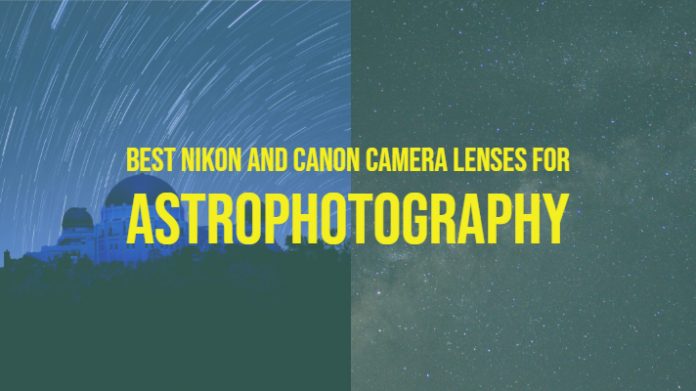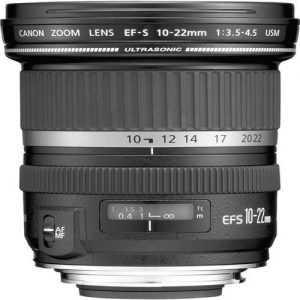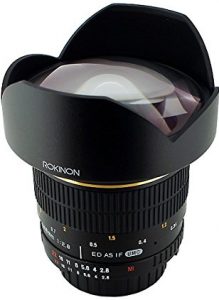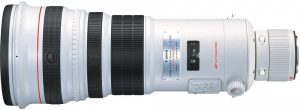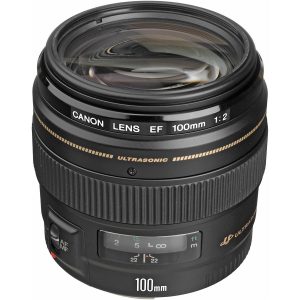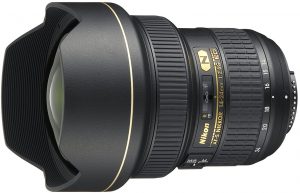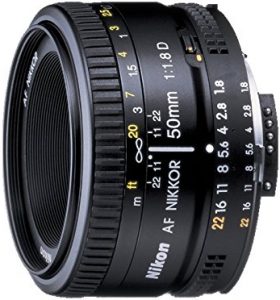In this article, we have listed out the best Nikon and Canon Camera Lenses for Astrophotography. If this is your thing, read along to know more!
If you are a night photographer and looking for the best options for the astrophotography, the special astrophotography lenses can be one of the best choices you would opt for. In fact, looking at the vast expanse of the sky and shooting it can bring in the much needed déjà vu experience for a photographer. If you are checking out the best astrophotography lenses for your Canon and Nikon cameras, the following list of options can be a great choice. Check out our top picks for the best in terms of astrophotography lenses.
Best Nikon and Canon Camera lenses for Astrophotography
High-resolution digital sensors can be one of the challenges for digital photographers. These lenses are typically designed for use in presence of light sources or simply day time photography. However, for us photographers, the night sky offers an excellent canvas. And that is precisely where astrophotography comes to the fore and assumes a lot of importance.
If you are confused about what astrophotography is all about, let us explain. Astrophotography is nothing but shooting the night sky. The stars and other celestial bodies can be an excellent option for awesome photography adventures and masterpieces. From that perspective, here are a few great Nikon and Canon lenses for a unique astrophotography experience.
Canon EF-S 10-22mm f/3.5-4.5 USM SLR Lens
Detailed Specifications:
| The angle of View (Diagonal) | 107°30’~63°30’ |
| The angle of View (Horizontal) | 97°10’~54°30’ |
| The angle of View (Vertical) | 74°10’~37°50’ |
| Minimum Closest Focusing Distance (m, ft) | 0.24/0.8 |
| Lens Construction (groups elements) | 10-13 |
| Diameter x Length (mm) (Maximum) | 83.5 x 89.8 |
| Distance Scale | o |
| Focus Drive System | Ring-type USM |
| Front Filter Size (mm) | 77 |
| Max. Magnification (x) | 0.17 |
| Min. Aperture | 22~27 |
| No. of Diaphragm Blades | 6 |
| Anti-dust & Moisture | Not Supported |
| Gross Weight (g) (Approx.) | 385 |
| Accessories (Lens Cap) | E-77 II |
| Accessories (Lens Hood) | EW-83E |
| Accessories (Lens Bag) | LP1319 |
The lens covers a more powerful wide angle range and can be one of the prominent choices for astrophotography. The lens is specifically designed to work with the Canon EF-S-mount DSLRs.
The lens comes with one Super-UD element and three aspherical elements. This can go a long way in promoting your needs in controlling chromatic and spherical aberrations. It also has a super spectra coating to prevent ghosting effects. The autofocus functionality is both faster and accurate. Of course, you also have access to the manual focus that overrides the autofocus feature.
The lens is available with Polaroid Micro Fiber Cleaning Cloth and a Lens cap keeper. You can indeed use it with the best astrophotography performance with a wide open aperture.
You can opt for the lens at Amazon at this link.
Rokinon FE14M-C 14mm F2.8 Ultra Wide Lens for Canon
Full Specifications:
MSRP: Check on Amazon
The lens offers a 116 degrees field of view. The 14 elements in 10 groups construction can be one of the formidable choices for a sharper image. This lens consists of 2 ED elements, 1 Hybrid Aspherical element, 3 High Refractive Index elements, and one glass Aspherical element. The lens can work well with several options like Canon EF, Nikon F, Sony E, MFT, Sony A, Pentax K, and Fuji X.
The UMC Multi Coating on the lens can be helpful enough in reducing flare and ghosting to a greater extent. It has a deep coma and an excellent sharpness that aids you quite much in terms of astrophotography and may be an excellent option for shooting the night sky.
You can consider checking it out on Amazon.
Canon EF 500mm f/4L IS USM Super Telephoto Lens
Full Specifications:
- Focal Length & Maximum Aperture: 500mm f/4.0
- Lens Construction: 16 elements in 12 groups (Including drop-in rear filter, Fluorite: G2 and G4, UD Lens: None)
- Diagonal Angle of View: 5°
- Focus Adjustment: Inner focusing system, with focusing cam
- Closest Focusing Distance: 3.7m / 12.14 ft.
- Filter Size: 52mm Drop-In
- Max. Diameter x Length, Weight: 5.7 x 15.1, approx. 112.5 oz. / 146 x 383mm, approx. 3190g
This is a Canon L series super telephoto lens that ensures faster performance and intuitive level of handling. The lens comes with a pair of fluorite elements and four aspherical elements and ensures you a sharper image and an accurate rendering.
The lens also comes with a Sub Wavelength Coating that enhances the color accuracy and removes the flare to a better extent. The four stop-effective Image Stabilizer system provides you with three separate stabilization modes. A favorite option for those involved in motorsports, wildlife and nature shooters, the lens can also double up as one of the prime choices for astrophotography. The lens comes with a quieter and faster autofocus feature.
The lens has fluorine coating on the exposed elements thereby ensuring smudge free performance that does away the fingerprint marks. There is a rounded nine-bladed design that offers you a shallow depth of field and selective focus techniques.
Check out the lens at this link on Amazon.
Canon EF 100mm f/2 USM Lens
Full Specifications:
- Focal Length & Maximum Aperture: 100mm 1:2.0
- Lens Construction: 8 elements in 6 groups
- Diagonal Angle of View: 24°
- Focus Adjustment: Rear focusing system with USM
- Closest Focusing Distance: 0.9m / 3 ft.
- Filter Size: 58mm
- Max. Diameter x Length, Weight: 3.0 x 2.9, 1.0 lbs. / 75.0 x 73.5mm, 460g
If you are looking for the best in class portraits, the Canon EF 100mm f/2 USM Lens is a great choice by almost every standard. The short telephoto prime lens is a good option for working with your astrophotography needs with a few specific settings. The f 2.0 aperture should also be a great option for working with a shallow depth of field.
The lens can be one of the best options to work with most of the full-frame Canon EF-mount DSLRs. However, it can also be one of the right opportunities to work with APS-C models as well. The high end low light functionality offered by the f 2.0 aperture should work efficiently for the low light photography and thus an efficient astrophotography requirement.
The Super Spectra coating is one of the features we loved the most and provides you access to powerful anti-flare and anti-ghosting features. The ring-type USM motor will be one of the excellent choices for working with faster, precise and quieter autofocus.
You can check out the lens on Amazon.
Canon EF 400mm f/5.6L USM Super Telephoto Lens
- Focal Length & Maximum Aperture: 100-400mm 1:4.5-5.6
- Lens Construction: 17 elements in 14 groups
- Diagonal Angle of View: 24° – 6° 10′
- Focus Adjustment: Rear focusing system with USM
- Closest Focusing Distance: 1.8m/ 5.9 ft.
- Zoom System: Linear extension Type
- Filter Size: 77mm
- Max. Diameter x Length, Weight: 3.6 x 7.4, 3.1 lbs. / 92mm x 189mm, 1,380g
Best suited for sports and wildlife photography, the Canon EF 400mm f/5.6L USM Super Telephoto Lens is one of the prominent options for astrophotography for obvious reasons. The lens comes equipped with a removable rotating tripod collar that assists you in stable photography.
The astrophotography lens offers you access to one Super Ultra-Low Dispersion element and one ultra-low dispersion element for providing you access to control over chromatic aberrations and color fringing. The eight-blade diaphragm gives access to a shallow depth of field along with selective focus options. The lens is compatible with full-frame Canon EF-mount DSLRs as well as APS-C models.
The lens comes with internal focusing and also provides you access to both manual and autofocus functionality with simple and easy switching between the two. That can be a great option to shoot the stars of your choice and night skies clear enough that you have always longed for.
If you want to give it a try, you can check it out at this link on Amazon.
Nikon AF-S NIKKOR 14-24mm f/2.8G ED
Full Specifications:
- Lens Construction (Elements/Groups): 14/11 (2 ED glass elements, 3 aspherical lenses and 1 Nano Crystal Coat)
- Picture Angle with 35mm (135) format: 114° – 84°
- Picture Angle with Nikon DX Format: 90° – 61°
- Minimum f/stop: 22
- Closest focusing distance: 0.28 m (through the entire focal range)
- Maximum reproduction ratio: 1/6.7
- Lens Cap – Slip-on
- Lens Hood: Built-in
- Lens Case: CL-M3
- Dimensions (approx.) : 98 x 131.5 mm
- Weight (approx.): 1 Kilo
- Supplied Accessories (may differ by country or area): Front lens cap, Rear lens cap LF-1, Semi-soft Case CL-M3
The lens offers you a faster aperture and high-performance functionality with a wide angle zoom feature. The lens is best optimized for use with Nikon FX and DX-format DSLR cameras. It is best suited for landscape, nature, and interior photography. It can even suit your needs in astrophotography to a greater extent.
On the inside, the optical design of the lens packs in three aspherical elements and two extra-low dispersion elements. You also have access to nanocrystal coating for controlling flare and ghosting to an efficient extent. The lens also comes with a Silent Wave Motor that takes care of the almost silent autofocus functioning.
The dust and moisture resistance are a couple of features that should make it one of the prominent options. Quicker shifting between manual and autofocus modes should provide you with a better option for astrophotography needs.
You can check it out on Amazon.
Nikon AF FX NIKKOR 50mm f/1.8D Lens for Nikon DSLR Cameras
Full Specifications:
- Lens Construction (Elements/Groups): 6/5
- Picture Angle with 35mm (135) format: 46°
- Picture Angle with Nikon DX Format: 31°30′
- Minimum f/stop: 22
- Closest focusing distance: 0.45m
- Maximum reproduction ratio: 1/6.6
- Filter Attachment Size: 52mm
- Lens Cap: Snap-on
- Lens Hood: HR-2
- Lens Case: CL-30S
- Dimensions (approx.) (from the camera’s lens mounting flange): 63.5 x 39mm
- Weight (approx.): 155g
- Supplied Accessories (may differ by country or area): Front lens cap
Another powerful option for use with your astrophotography requirements, it provides the autofocus functionality that suits the select list of Nikon D Type lenses. The f 1.8 aperture works best for shooting a wide range of lighting conditions. The individual elements have a super integrated coating for providing you access to flareless functioning and reduced ghosting.
The lens offers you high contrast images at the maximum aperture. The aperture provides you access to awesome pictures with shallow depth of field. The lightweight lens works with almost all lighting conditions making it a formidable choice even for astrophotography. The best low light performance is what would make it a powerful performer in many aspects.
The efficient background blur is yet another feature that the lens provides you access to. Get access to every fine detail with enhanced color consistency. Switching between the autofocus and manual focus is a cakewalk with the glass and this precisely the feature that can be an excellent option for shooting the night sky and the stars.
Also, do keep in mind that this lens does not fit with any DX mount cameras such as the 3000 series from Nikon.
Want to give it a try? Find more about it at this link on Amazon.
The Concluding Thoughts
Those were a few typical astrophotography lenses that can be quite efficient in addressing your concerns in shooting the night sky, stars or even the other celestial bodies. Make sure you are using a tripod to shoot the skies as it will provide you access to the much-needed clarity in your night vision photography.
Apart from the select Nikon and Canon lenses that can be used for astrophotography, there several third-party options available as well. Sigma and Samyang are a couple of manufacturers that have been practical enough.

